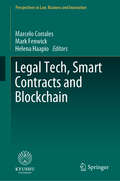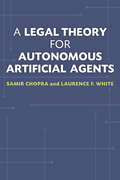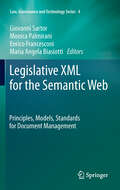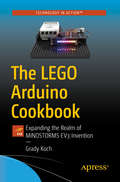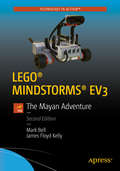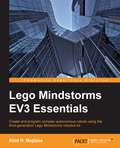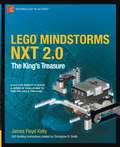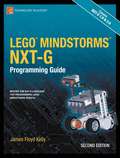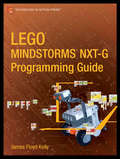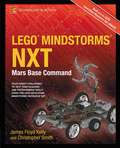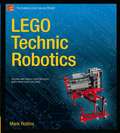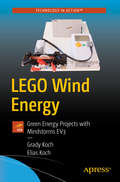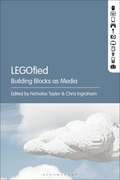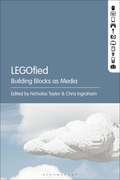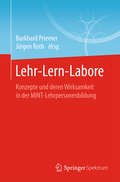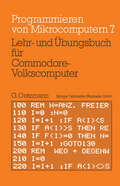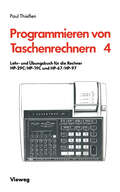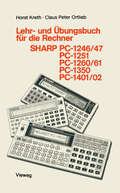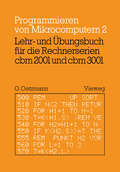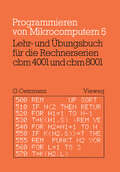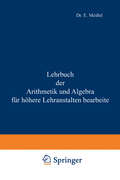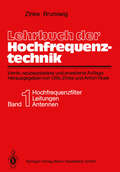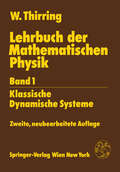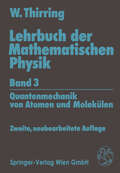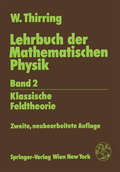- Table View
- List View
Legal Tech, Smart Contracts and Blockchain (Perspectives in Law, Business and Innovation)
by Marcelo Corrales Mark Fenwick Helena HaapioThere is a broad consensus amongst law firms and in-house legal departments that next generation “Legal Tech” – particularly in the form of Blockchain-based technologies and Smart Contracts – will have a profound impact on the future operations of all legal service providers. Legal Tech startups are already revolutionizing the legal industry by increasing the speed and efficiency of traditional legal services or replacing them altogether with new technologies. This on-going process of disruption within the legal profession offers significant opportunities for all business. However, it also poses a number of challenges for practitioners, trade associations, technology vendors, and regulators who often struggle to keep up with the technologies, resulting in a widening regulatory “gap.” Many uncertainties remain regarding the scope, direction, and effects of these new technologies and their integration with existing practices and legacy systems. Adding to the challenges is the growing need for easy-to-use contracting solutions, on the one hand, and for protecting the users of such solutions, on the other. To respond to the challenges and to provide better legal communications, systems, and services Legal Tech scholars and practitioners have found allies in the emerging field of Legal Design. This collection brings together leading scholars and practitioners working on these issues from diverse jurisdictions. The aim is to introduce Blockchain and Smart Contract technologies, and to examine their on-going impact on the legal profession, business and regulators.
A Legal Theory for Autonomous Artificial Agents
by Samir Chopra Laurence F. White“An extraordinarily good synthesis from an amazing range of philosophical, legal, and technological sources . . . the book will appeal to legal academics and students, lawyers involved in e-commerce and cyberspace legal issues, technologists, moral philosophers, and intelligent lay readers interested in high tech issues, privacy, [and] robotics.” —Kevin Ashley, University of Pittsburgh School of Law As corporations and government agencies replace human employees with online customer service and automated phone systems, we become accustomed to doing business with nonhuman agents. If artificial intelligence (AI) technology advances as today’s leading researchers predict, these agents may soon function with such limited human input that they appear to act independently. When they achieve that level of autonomy, what legal status should they have? Samir Chopra and Laurence F. White present a carefully reasoned discussion of how existing philosophy and legal theory can accommodate increasingly sophisticated AI technology. Arguing for the legal personhood of an artificial agent, the authors discuss what it means to say it has “knowledge” and the ability to make a decision. They consider key questions such as who must take responsibility for an agent’s actions, whom the agent serves, and whether it could face a conflict of interest.
Legislative XML for the Semantic Web: Principles, Models, Standards for Document Management (Law, Governance and Technology Series #4)
by Giovanni Sartor, Monica Palmirani, Enrico Francesconi and Maria Angela Angela BiasiottiThis volume examines the basic layers of the standard-based creation and usage of legislation. In particular, it addresses the identification of legislative documents, their structure, the basic metadata and legislative changes. Since mature technologies and established practices are already in place for these layers, a standard-based approach is a necessary aspect of the up-to-date management of legislative resources. Starting out with an overview of the context for the use of XML standards in legislation, the book next examines the rationale of standard-based management of legislative documents. It goes on to address such issues as naming, the Akoma-Ntoso document model, the contribution of standard-based document management to handling legislative dynamics, meta-standards and interchange standards. The volume concludes with a discussion of semantic resources and a review on systems and projects.
The LEGO Arduino Cookbook: Expanding the Realm of MINDSTORMS EV3 Invention
by Grady KochPush into new fields of technology using LEGO and Arduino with the projects in this Cookbook. MINDSTORMS EV3 inventions don’t have to be confined to LEGO factory-made sensors. Incorporate a wide range of sensors, displays, LED arrays, actuators, and even a smartphone into your creations. Add amazing capabilities to your LEGOs by building things such as a metal detector, long-range lidar, audio spectrum analyzer, weather station, and a smartphone. Step-by-step instructions bring these new devices to life. You’ll work with the reliable and inexpensive Arduino UNO to take your projects even further and make them truly smart. Learn to set up and program your Arduino UNO. Then learn data communications protocols (I2C, SPI, and PWM) to link sensors to the Arduino. A variety of data communications techniques are also demonstrated on passing data between the Arduino and the MINDSTORMS EV3 Intelligent Brick. Equipped with these new tools, LEGO inventors can build vast new capabilities into their designs. What You'll LearnInterface new sensors, devices, and communications with LEGO Mindstorms EV3Work with communication protocols of pulse width modulation (PWM), I2c, and SPIConvert pulse width modulation to analog voltage with resistor and capacitor componentsWho This Book Is ForTech savvy fans of LEGO projects and hardware hackers. Also coaches or students involved in a school science/technology project or design competition.
LEGO® MINDSTORMS® EV3: The Mayan Adventure
by Mark Bell James Floyd KellyThrough the use of a fictional story, this book details how to build and design robots. Max, the story's main character, is part of an archaeological expedition investigating a newly discovered Mayan pyramid. During the expedition, the team encounters various problems, each solved with the help of a unique robot that Max creates using the Lego Mindstorms NXT kit. Although the book reveals possible robotic solutions and offers detailed information on how to build and program each robot, readers are encouraged to come up with their own. The book includes complete building theory information and provides worksheets for brainstorming.
Lego Mindstorms EV3 Essentials
by Abid H. MujtabaIf you are a robot enthusiast who wants to quickly get the most out of Lego Mindstorms EV3, this is the book for you. Prior programming experience is useful to get the most out of this book, but not necessary.
LEGO MINDSTORMS NXT 2.0: The King's Treasure
by James Floyd Kelly Christopher SmithFollow the adventures of Evan and his archaeologist uncle as they explore for treasure from an ancient kingdom. Help them succeed by building a series of five robots using LEGO's popular MINDSTORMS NXT 2.0 robotics kit. Without your robots, Evan and his uncle are doomed to failure and in grave danger. Your robots are the key to their success in unlocking the secret of The King's Treasure! In this sequel to the immensely popular book, LEGO MINDSTORMS NXT: The Mayan Adventure, you get both an engaging story and a personal tutorial on robotics programming. You'll learn about the motors and sensors in your NXT 2.0 kit. You'll learn to constructively brainstorm solutions to problems. And you'll follow clear, photo-illustrated instructions that help you build, test, and operate a series of five robots corresponding to the five challenges Evan and his uncle must overcome in their search for lost treasure. Provides an excellent series of parent/child projects Builds creative and problem-solving skills Lays a foundation for success and fun with LEGO MINDSTORMS NXT 2.0 Please note: the print version of this title is black & white; the eBook is full color.
LEGO MINDSTORMS NXT-G Programming Guide
by James Floyd KellyJames Kelly’s LEGO MINDSTORMS NXT-G Programming Guide, Second Edition is a fountain of wisdom and ideas for those looking to master the art of programming LEGO’s MINDSTORMS NXT robotics kits. This second edition is fully-updated to cover all the latest features and parts in the NXT 2.0 series. It also includes exercises at the end of each chapter and other content suggestions from educators and other readers of the first edition. LEGO MINDSTORMS NXT-G Programming Guide, Second Edition focuses on the NXT-G programming language. Readers 10 years old and up learn to apply NXT-G to real-life problems such as moving and turning, locating objects based upon their color, making decisions, and much more. Perfect for for those who are new to programming, the book covers the language, the underlying mathematics, and explains how to calibrate and adjust robots for best execution of their programming. Provides programming techniques and easy-to-follow examples for each and every programming block Includes homework-style exercises for use by educators Gives clear instructions on how to build a test robot for use in running the example programs Please note: the print version of this title is black & white; the eBook is full color.
LEGO MINDSTORMS NXT-G Programming Guide
by James Floyd KellyThe NXT-G visual programming language for the NXT robot is completely new and there are currently no books available on the subject. This book is written for kids, teachers, parents or anyone new to the NXT-G programming language. It covers all of the basic, intermediate, and advanced programming blocks that are standard with the NXT-G language suite. The book uses simple, non-technical terminology with plenty of screenshots and line drawings to demonstrate proper use of all the blocks as well as basic programming techniques such as loops, If-Then statements, case statements, and use of variables.
LEGO MINDSTORMS NXT: Mars Base Command
by James Floyd Kelly Christopher SmithCongratulations! You&’re on Mars Base Alpha, the first human outpost on the red planet. Don&’t relax, though. It&’s not all roses and unicorns up here. Mars isn&’t called "The Bringer of War" for nothing! You&’ve just been rained on by a meteor shower and it&’s up to you—you!—to put your LEGO MINDSTORMS NXT robotics skills to work to save the day, and the base! And that&’s only the beginning of the challenges that lie ahead. LEGO MINDSTORMS NXT: Mars Base Command is a book of challenge. It&’s about challenging yourself to design and build robots to solve problems, tough problems. Taking a similar approach to best-selling LEGO author James Kelly&’s other books, this book presents a series of four challenges in the setting of mankind&’s first-ever manned base on the planet Mars. Each challenge begins with a backstory to set the scene. You&’re given instructions for constructing a playing field, including devices that your eventual robot must manipulate. Your job is to build a robot that will execute the challenge and garner you the most points. The book requires the LEGO MINDSTORMS NXT Education Resource Set. Scoring sheets are included that allow for the book&’s use in educational and group settings. Teachers can base lesson plans around the different concepts taught in each challenge. Groups and clubs can choose to run mini-competitions in which teams or individuals compete against each other in a race to save the base. LEGO MINDSTORMS NXT: Mars Base Command is an excellent choice for an individual, a group, or a teacher wishing to learn about and have more fun with LEGO&’s best-selling robotics platform.Please note: the print version of this title is black & white; the eBook is full color.
LEGO Technic Robotics
by Mark RollinsBuilding robots is a snap with LEGO Technic Robotics! This book shows you how to use LEGO bricks and Power Functions components such as motors and remote controls to create all kinds of robots. Best of all, you don&’t have to learn any programming. You just need your imagination and the expert building principles that you&’ll find inside LEGO Technic Robotics. Author Mark Rollins teaches you the hows and whys of Technic project design. You&’re not just snapping pieces here and there; with LEGO Technic Robotics you&’re actively learning the fundamentals of good design so you can go on to create truly spectacular LEGO robot creations.From robots that run on wheels, walk on two or four legs, or move and function in ways that only you can dream up, this book will help you create your own robot army. Turn to LEGO Technic Robotics and build with real power! After you&’ve mastered the techniques in this book, if you&’re looking to build more creations, check out Practical LEGO Technics, also written by Mark Rollins, and discover how to build vehicles that can roll, run, and more.Please note: the print version of this title is black & white; the eBook is full color. You can download the color diagrams in the book from http://www.apress.com/9781430249801
LEGO Wind Energy: Green Energy Projects with Mindstorms EV3
by Grady Koch Elias KochBuild functioning wind turbines that generate electricity; we don’t mean LEGO models that look like miniature wind turbines. This book is for people who want to learn how real turbines work, and to build them using LEGO and Mindstorms EV3. You’ll find specific instructions on building, links to parts purchasing, distillation of complex science ideas into practice, and pointers for trying something new. With the knowledge you gain here, you’ll be able to compete in turbine design competitions, such as the KidWind Challenge, Collegiate Wind Competition, and locally organized contests. Examples are given that fit within the KidWind Challenge, including adherence to rules of the competition such as that a specific generator be used.The complexity of making a wind turbine a can make it difficult to know where to start. This book addresses many aspects of the turbine with practical examples. You'll follow specific design instructions for turbine construction, supported by suggestions and background science to go in new directions. Assembly diagrams are used throughout, made with the Studio utility from bricklink.com. Parts are identified in the assembly diagram, as well as in parts lists in the Appendix.What You'll LearnBuild a turbine from scratchUse LEGO to learn aspects of electrical engineering, such as loading turbine output and impedance matchingConnect a generator to do useful things such as charging a battery or powering LEDs See how generators, gear systems, aerodynamic blades, lab and outdoor testing, and power output are used.Who This Book Is For Adult fans of LEGO and hardware hackers. Also coaches or students involved in a school science/technology project or design competition.
LEGOfied: Building Blocks as Media
by Nicholas Taylor Chris IngrahamLEGOfied: Building Blocks as Media offers a multi-faceted exploration of LEGO fandom, addressing a blindspot in current accounts of LEGO and an emerging area of interest to media scholars: namely, the role of hobbyist enthusiasts and content producers in LEGO's emergence as a ubiquitous transmedia franchise. This book examines a range of LEGO hobbyism and their attendant forms of mediated self-expression and identity (their “technicities”): artists, aspiring Master Builders, collectors, and entrepreneurs who refashion LEGO bricks into new commodities (sets, tchotchkes, and minifigures). The practices and perspectives that constitute this diverse scene lie at the intersection of multiple transformations in contemporary culture, including the shifting relationships between culture industries and the audiences that form their most ardent consumer base, but also the emerging forms of entrepreneurialism, professionalization, and globalization that characterize the burgeoning DIY movement. The major aim of this edited volume, and what makes it a compelling project for media scholars, is its rigorous, mutli-dimensional articulation of how LEGO functions not just as toy, as cultural icon, or as transmedia franchise, but as a media platform. LEGOfied is centered around their shared experiences, qualitative observations, and semi-structured interviews at a number of LEGO hobbyist conventions. Working outwards from these conventions, each chapter of the book engages additional modes of inquiry -- media archaeology, aesthetics, posthumanist philosophy, feminist media studies, and science and technology studies -- to explore the origins, permutations and implications of different aspects of the contemporary LEGO fandom scene.
LEGOfied: Building Blocks as Media
LEGOfied: Building Blocks as Media offers a multi-faceted exploration of LEGO fandom, addressing a blindspot in current accounts of LEGO and an emerging area of interest to media scholars: namely, the role of hobbyist enthusiasts and content producers in LEGO's emergence as a ubiquitous transmedia franchise. This book examines a range of LEGO hobbyism and their attendant forms of mediated self-expression and identity (their “technicities”): artists, aspiring Master Builders, collectors, and entrepreneurs who refashion LEGO bricks into new commodities (sets, tchotchkes, and minifigures). The practices and perspectives that constitute this diverse scene lie at the intersection of multiple transformations in contemporary culture, including the shifting relationships between culture industries and the audiences that form their most ardent consumer base, but also the emerging forms of entrepreneurialism, professionalization, and globalization that characterize the burgeoning DIY movement. The major aim of this edited volume, and what makes it a compelling project for media scholars, is its rigorous, mutli-dimensional articulation of how LEGO functions not just as toy, as cultural icon, or as transmedia franchise, but as a media platform. LEGOfied is centered around their shared experiences, qualitative observations, and semi-structured interviews at a number of LEGO hobbyist conventions. Working outwards from these conventions, each chapter of the book engages additional modes of inquiry -- media archaeology, aesthetics, posthumanist philosophy, feminist media studies, and science and technology studies -- to explore the origins, permutations and implications of different aspects of the contemporary LEGO fandom scene.
Lehr-Lern-Labore: Konzepte und deren Wirksamkeit in der MINT-Lehrpersonenbildung
by Burkhard Priemer Jürgen RothAn verschiedenen Hochschulen werden in den MINT-Fächern Schülerlabore in die Lehrpersonenbildung integriert. In diesen - als Lehr-Lern-Labore bezeichneten - Einrichtungen werden MINT-Lernumgebungen für Schülerinnen und Schüler, Veranstaltungen der Lehrpersonenbildung und an vielen Standorten auch fachdidaktische Forschung fruchtbar miteinander verknüpft. Das Ziel ist dabei, evidenzbasiert innovative Lehrkonzepte für Schule und Hochschule zu entwickeln und zu implementieren. In diesem Band werden Lehr-Lern-Labore zunächst allgemein beschrieben und dann durch zahlreiche Beispiele von Konzepten verschiedener Hochschulstandorte illustriert. Darüber hinaus wird berichtet, welche Wirksamkeit Lehr-Lern-Labore bei der Förderung von Kompetenzen zukünftiger Lehrpersonen haben und wie Studierende diese Einrichtungen wahrnehmen. Die vorgestellten Forschungsergebnisse, die aus einem Verbund von sechs Hochschulen stammen, sollen durch diesen Band weiteren Standorten zugänglich gemacht werden. Dieses Buch richtet sich an Studierende und Dozierende der Lehrpersonenbildung in Hochschulen - insbesondere in den MINT-Fachdidaktiken - sowie an Personen in Schule und Referendariat.
Lehr- und Übungsbuch für Commodore-Volkscomputer (Programmieren von Mikrocomputern #7)
by Gerhard Oetzmannln vielen Bereichen des beruflichen Alltags findet man heute Mikrocomputer. Neuerdings ziehen diese Geräte auch in unsere Wohnungen ein. ln der Form des Volks-Computers werden sie an ein (Farb-)Fernsehgerät angeschlossen und stehen für ernsthafte wie für unterhaltsame Anwendungen zur Verfügung. Voraussetzung ist der Besitz entsprechender Programme, die man kaufen oder in der Sprache BASIC selbst erstellen-kann. Dieses Buch wendet sich an Leser, die lernen wollen, Commodore Volks-Computer zu programmieren. Der Autor geht davon aus, daß dem Leser ein derartiger Computer zur Verfügung steht. Daher sind zahlreiche Experimente und Aufgaben aufgenommen worden, deren Ausführung bzw. Bearbeitung die Basis bilden für das effektive Erlernen der Pro grammierung. Vorkenntnisse über Aufbau und Funktionsweise von Digitalrechnern sind nicht unbedingt erforderlich. Die Eigenarten der Programmierung werden an populären Aufgaben und ein fachen mathematischen Problemen demonstriert. Die dafür erforderlichen Mathematik kenntnisse beschränken sich im wesentlichen auf die Grundlagen der Algebra. Zu danken habe ich meiner Frau für die umfassende Unterstützung und die Übernahme der Schreibarbeiten. Ich danke auch der Geschäftsführung der COMMODORE Büroma schinen GmbH, die die Entstehung dieses Buches durch die vorübergehende Überlassung eines VC 20 gefördert hat. Nicht zuletzt gilt mein Dank den Mitarbeitern des Verlages für die reibungslose Zusammenarbeit.
Lehr- und Übungsbuch für die Rechner HP-29C/HP-19C und HP-67/HP-97 (Programmieren von Taschenrechnern #4 )
by Paul A. ThießenLehr- und Übungsbuch für die Rechner SHARP PC-1246/47, PC-1251, PC-1260/61, PC-1350, PC-1401/02 (Programmieren von Taschenrechnern #10)
by Kreth HorstLehr- und Übungsbuch für die Rechnerserien cbm 2001 und cbm 3001 (Programmieren von Mikrocomputern #2)
by Gerhard OetzmannMikrocomputer erfreuen sich wachsender Beliebtheit, was nicht zuletzt darin begründet ist, daß sie in einer höheren Programmiersprache, meistens BASIC, programmiert werden kön nen. Diese Sprache ist in ihrem Kern standardisiert, aber jeder Rechnerhersteller hat zusätz liche Anweisungsarten integriert. Wer effektvoll programmieren will, muß also die auf sei nen Rechner ausgerichtete Variante des BASIC beherrschen. Dieses Buch wendet sich an Leser, die lernen wollen, einen Commodore-Rechner der Se rien cbm 2001 oder cbm 3001 in BASIC zu programmieren. Dabei ist ein regelmäßiges, ak tives Arbeiten an einem entsprechenden Rechner unverzichtbar. Deshalb sollten die zahl reichen Experimente unbedingt durchgeführt und die Aufgaben, soweit das möglich ist, am Rechner gelöst werden. Vorkenntnisse über Aufbau und Funktionsweise von Digitalrechnern sind nicht unbedingt erforderlich. Da die Eigenarten der Programmierung sich an mathematischen Problemen be sonders einfach demonstrieren lassen, werden geringe Mathematikkenntnisse vorausgesetzt, die sich im wesentlichen auf die Grundlagen der Algebra beschränken. Zu danken habe ich meiner Frau für die umfassende Unterstützung und die übernahme der Schreibarbeiten. Ich danke auch der Geschäftsführung der DATENREVISION Beratungs gesellschaft, Hamburg 90, die die Entstehung dieses Buches durch die vorübergehende über lassung einer cbm-Rechenanlage gefördert hat. Nicht zuletzt gilt mein Dank den Mitarbei tern des Verlages für die reibungslose Zusammenarbeit. G.Oetzmann Hamburg, im Frühjahr 1981 1 Was ist BASIC? Charakteristisch für einen frei programmierbaren Digitalrechner ist die Trennung der Ar beitsanweisung (des Programms) von der ausführenden Anlage. Dadurch wird es möglich, einer Anlage durch Wechsel des Programms immer wieder neue Aufgaben zu übertragen.
Lehr- und Übungsbuch für die Rechnerserien cbm 4001 und cbm 8001 (Programmieren von Mikrocomputern)
by Gerhard OetzmannLehrbuch der Hochfrequenztechnik: Erster Band: Hochfrequenzfilter, Leitungen, Antennen
by Otto Zinke Heinrich BrunswigBehandelt Erzeugung, Verstärkung, Fortleitung, Ausstrahlung und Anwendung elektromagnetischer Signale über den vollen Frequenzbereich, von einigen kHz bis zur optischen Nachrichtentechnik. Band 1 geht auf Schwingkreise, Hochfrequenzübertrager und -filter, Eigenschaften von Koaxialkabeln, Mikrostreifenleitungen, Koplanar- und Fin-Leitungen, Richtkoppler, Lichtwellenleiter, Oberflächenwellen-Filter, Hohlleiter und gyromagnetischen Medien sowie Antennen ein. Die Neuauflage wurde aktualisiert und ergänzt, speziell um einen Beitrag Quarzfilter. Band 2 behandelt Elektronik und Signalverarbeitung in der Hochfrequenztechnik und beschreibt neueste Entwicklungen bis zu höchsten Leistungen und höchsten Frequenzen; die Eigenschaften analoger und digitaler integrierter Schaltungen werden dargestellt.
Lehrbuch der Mathematischen Physik: Band 3: Quantenmechanik von Atomen und Molekülen
by Walter ThirringIn der Quantentheorie werden Observable durch Operatoren im Hilbert-Raum dargestellt. Der dafür geeignete mathematische Rahmen sind die Cx - Algebren, welche Matrizen und komplexe Funktionen verallgemeinern. Allerdings benötigt man in der Physik auch unbeschränkte Operatoren, deren Problematik eigens untersucht werden muß. Dementsprechend werden zunächst mathematische Fragen studiert und dann die Methoden auf atomare Systeme angewandt. Obgleich man außer dem Wasserstoffatom kaum explizit lösbare Probleme findet, lassen sich nicht nur allgemeine qualitative Fragen, etwa bezüglich des Energiespektrums und Streuverhaltens, beantworten, sondern auch quantitativ kann man auch für kompliziertere Systeme für meßbare Größen Schranken teils befriedigender Genauigkeit finden. Inhaltsverzeichnis: Einleitung: Die Struktur der Quantentheorie; Größenordnungen atomarer Systeme.- Die mathematische Formulierung der Quantenmechanik: Lineare Räume; Algebren; Darstellungen im Hilbertraum; Einparametrige Gruppen; Unbeschränkte Operatoren und quadratische Formen.- Quantendynamik: Das Weyl-System; Der Drehimpuls; Die Zeitentwicklung; Der Limes t ; Störungstheorie; Stationäre Streutheorie.- Atomare Systeme: Das Wasserstoffatom; Das H-Atom in äußeren Feldern; Heliumartige Atome; Streuung am einfachen Atom; Komplexe Atome; Kernbewegung und einfache Moleküle.
Lehrbuch der Mathematischen Physik: Band 2: Klassische Feldtheorie
by Walter ThirringDie Sprache und die Methoden der modernen Differentialgeometrie sind in der vergangenen Dekade immer mehr in die theoretische Physik eingedrungen. Was vor 15 Jahren, als das Buch zuerst als Vorlesungsskriptum herauskam, noch extravagant erschien, ist heute ein Gemeinplatz. Dies hat mich in der Ansicht gestärkt, daß die Studenten der theoretischen Physik diese Sprache lernen müssen, je eher desto besser. Schließlich werden sie die Professoren des 21. Jahrhunderts sein und es wäre absurd, würden sie dann die Mathematik des 19. Jahrhunderts lehren. Daher habe ich in der neuen Auflage auf dieser Symbolik beharrt, einige Fehler korrigiert und ein Kapi tel über Eichtheorien hinzugefügt. Da es sich gezeigt hat, daß sie die fundamentalen Wechselwirkungen beschreiben und ihre Struktur zumindest auf dem klassischen Ni veau hinreichend klar ist, scheinen sie mir zur Minimalausrüstung zu gehören, über die jeder Theoretiker verfügen muß. Mit Bedauern mußte ich davon Abstand nehmen, die neueren Entwicklungen der Kosmologie und Kaluza-Klein-artige Theorien aufzu nehmen, aber ich fühlte mich an mein ursprüngliches Versprechen gebunden, den Studenten keine theoretischen Spekulationen aufzubürden, für die es keine sichere experimentelle Evidenz gibt. Vielen Physikern bin ich für Hinweise bezüglich dieses Bandes sehr verpflichtet. Insbesondere P. Aichelburg, H. Rumpf und vor allem H. Urbantke haben zahlreiche Korrekturen und Verbesserungen angebracht. I. Dahl-Jensen sei dafür gedankt, daß sie manche nach Gefühl angefertigte Zeichnungen mit dem Computer ins richtige Lot gebracht hat.
